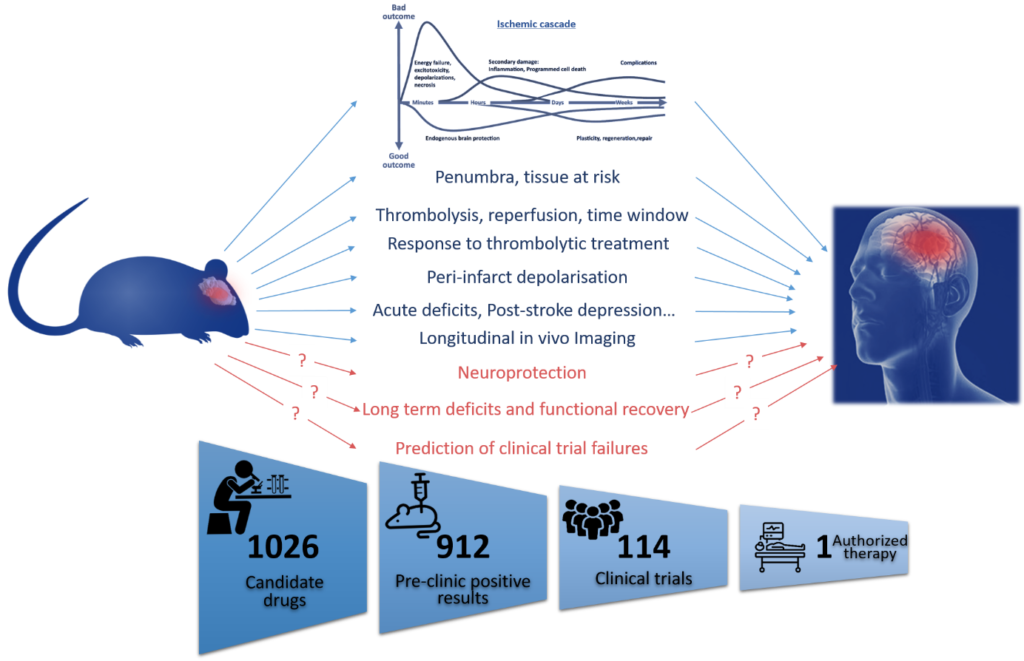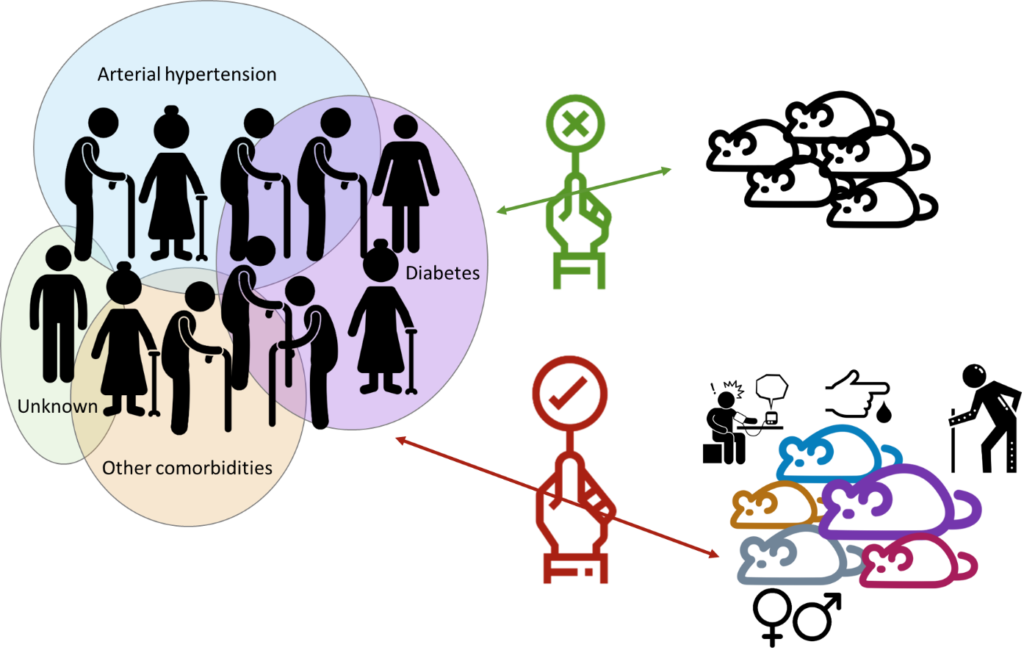Newsletter #6 – Modeling diversity in preclinical stroke
Taking clinical heterogeneity into account to increase the translational value of our preclinical models: the new STROK@LLIANCE research project
Early in 2019, we announced the launch of a collaborative research project aimed at improving the translational value of our innovative thrombo-embolic stroke models. In this project, clinical heterogeneity will be built into the models to evaluate the effects of co-morbidities, age and sex on outcomes and treatments. The team has already welcomed a PhD student, funded by CIFRE (Industrial Agreements for Research Training). We’re excited to be telling you about this new research project!
As both the leading cause of death and the top cause of severe disability¸ stroke is a major health problem worldwide. Sadly, few therapeutic options are available to the practitioner: only a small percentage of stroke patients can receive fibrinolysis or thrombectomy, mainly due to short therapeutic windows.
Despite more than two decades of intensive research in the field, all the treatments that were promising at the preclinical stage have failed in clinical studies, whatever the tested concept (improved fibrinolysis, therapeutic window extension, neuroprotection, or recovery improvement). This raises questions as to the relevance of available animal models (Fig. 1).

Figure 1: What have we learned from experimental animal stroke models? Similarities and discrepancies between preclinical and clinical studies
Although intraluminal MCAO models in rodents have led to numerous false positive results, probably due to significant limitations (see expert opinion #1), some academic laboratories have made a commitment to developing more translational models and establishing new gold standards. One such is the PhIND Laboratory in Caen (UMR U1237, academic partner to STROK@LLIANCE), which has fully validated an innovative model of thrombo-embolic stroke in mice that reproducibly mimics the essential features of human pathology and pharmacology (see newsletter #1).
This ischemic stroke model has been validated in healthy young male mice. While this configuration meets the strict need to reduce variability that is generally desired in preclinical pharmacology, it obscures the variability that can affect the efficacy of a drug during clinical trials. After all, isn’t stroke a complex heterogeneous pathology mainly affecting the elderly, often those suffering from comorbidities?
With this idea in mind we decided to explore this approach. Our main objective for this project is the production of a heterogeneous preclinical cohort of stroke-affected animals, including the main epidemiological and comorbid features in a proportion similar to those observed in the clinical situation. This is a matter of introducing variability and diversity into the preclinical studies.
After studying each factor independently, we will generate a cohort of stroke-affected animals inclusive of diversity. The first factors studied will be two major comorbidities: hypertension and diabetes (52% and 25% of patients are hypertensive or diabetic, respectively). Next, other factors such as age, sex or diet should be studied, possibly in different subsets of ischemic stroke etiologies that mimic cardioembolic vs. atherosclerotic origins (Fig. 2).

Figure 2: The STROK@LLIANCE research project: improving models by introducing diversity to preclinical models.
Firstly, the data collected will be useful in providing stroke pharmacological studies focused on a specific co-morbidity. Secondly, it will allow us to build up large-scale preclinical trials reproducing an aspect of clinical diversity. The point of such an innovative strategy is to better predict the effects of a drug candidate in clinic and, from the preclinical stage, to identify drug responder subgroups and anticipate the potential context of complications.
While ambitious, this project will (at the very least) provide numerous data and build our knowledge of the models. We at STROK@LLIANCE are therefore convinced that, in the current context of stroke pharmacological research, such an extensive piece of work is essential to bridging the gap between bench and bedside.
If you’re interested in our research projects and STROK@LLIANCE preclinical services, please feel free to get in touch!
